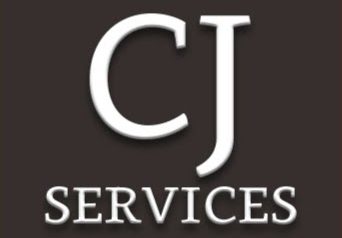Introduction
If you manage a property or own a business, you are aware of how important a reliable roof is to your business. In addition to protecting the physical assets within your company, it helps your business operations by shielding them from weather-related disruptions. But all roofs are not created equal. Commercial roofing calls for specific skills, a variety of materials, and an emphasis on durability. The fundamental components of commercial roofing and long-term maintenance are covered in this guide.
Built to Last: The Core Elements of a Reliable Commercial Roof
The proper materials, construction, and installation techniques are the first steps in creating a strong commercial roofing system. Every element, from drainage to insulation, needs to fit your company’s requirements.
Understanding risks, climate challenges, and long-term maintenance are also important factors when selecting the best roofing system.
Let’s examine what are the core elements of commercial roofing.
What Makes Commercial Roofing Different From Residential Roofing?
Understanding the difference between the two roofing types is crucial for selecting the right one for residential or commercial buildings, as wrong choices can lead to roof failure.
Let’s talk about the key differences between residential and commercial roofing systems:
| Size and design: Commercial roofs are typically flat or low-sloped, unlike residential roofs. |
| Materials: Commercial roofing often utilizes single-ply membranes (like TPO, PVC, EPDM) rather than shingles. |
| Installation: Commercial roof installations are often more complex and time-consuming than residential roofing. |
| Cost: Commercial roofing projects can be more expensive because of the larger area, specialized materials, and potentially more difficult installation. |
Common Types of Commercial Roofing Systems
Is your company’s roof getting close to the end of its useful life? With so many options on the market, choosing the best commercial roofing material for your building can be difficult.
Let’s look at the unique traits of different kinds of commercial roofs:
| Type 1: Single-Ply Roofing TPO (Thermoplastic Polyolefin)PVC (Polyvinyl Chloride)EPDM (Ethylene Propylene Diene Monomer) For commercial buildings, single-ply roofing offers a long-lasting, effective, and reasonably simple installation solution. |
| Type 2: Modified Bitumen Roofing APP (Atactic Polypropylene) SBS (Styrene Butadiene Styrene) Modified bitumen roofing is a versatile and reliable option for commercial buildings. |
| Type 3: Built-Up Roofing (BUR) BUR is a reliable and time-tested roofing system that offers excellent protection and durability |
| Type 4: Metal Roofing SteelAluminiumCopper Zinc Metal roofs give commercial buildings a contemporary and appealing appearance and are available in a range of designs, hues, and finishes. |
| Type 5: Liquid-Applied Roofing Offer smooth waterproof membranes that fit any penetration shape and are simple to apply. |
Understand Roof-Damaging Signs to Extend the Life of Your Commercial Roof
Which signs of commercial roof repair should a property manager or owner be aware of? These warning signs suggest that your commercial roof membrane or system most likely requires maintenance or repairs:
| Watch Out for These Warning Signs! |
| Leaks and water stains |
| Sagging or dips |
| Cracks, blisters, or tears in the roofing membrane |
| Damaged or missing flashing and fasteners |
| Rust or corrosion on metal roofs |
| Ponding water |
| Mold or mildew growth |
Maintenance Strategies to Extend the Life of Your Commercial Roof
Regular maintenance is the key to lowering your commercial roof replacement cost. In addition to extending the lifespan of your roof, solid commercial roof maintenance tips will
Shield your company from damage, downtime, and legal risks.
Here’s how to create a smart long-term savings plan for your commercial roof:
- Implement a Bi-Annual Inspection Routine
- Create a Preventive Maintenance Plan
- Keep Detailed Roofing Records
- Train On-Site Staff for Basic Roof Monitoring
- Maintain drainage systems
- Protect the commercial roof membrane
- Maintain rooftop HVAC units
Conclusion
Your roof is not just a cover; it is the first line of defence for your entire business. Whether you’re planning future maintenance, researching different types of commercial roofing, or contemplating a new installation, making smart decisions now will safeguard your bottom line tomorrow. For your company, a solid commercial roofing plan translates into fewer repairs, lower long-term expenses, and greater peace of mind. Make wise decisions first, conduct routine checks later, and always take action when you see warning indications. Because longevity is a strategy, not a chance, for your commercial roof.
FAQs
How long does a commercial roofing system typically last?
Depending on the material, most systems have a lifespan of 15–40 years. While metal roofs can last over 40 years with the right maintenance, EPDM can last over 25 years.
What is the cost of a commercial roof replacement?
The commercial roof replacement cost usually ranges from $5 to $12 per square foot, depending on the size, material, and labour involved.
Among types of commercial roofing, which are the most dependable?
Because of their longevity and low maintenance requirements, TPO, EPDM, and metal roofs are widely trusted.
How often should a commercial roof be inspected?
Twice a year at the very least, once in the spring and once in the fall. Additional inspections are recommended after storms or if internal leaks are found.
What does a commercial roof inspection checklist contain?
Examining seams, flashings, drainage systems, surface damage, HVAC units, and membrane condition is all part of a proper checklist.


